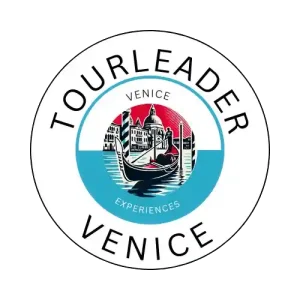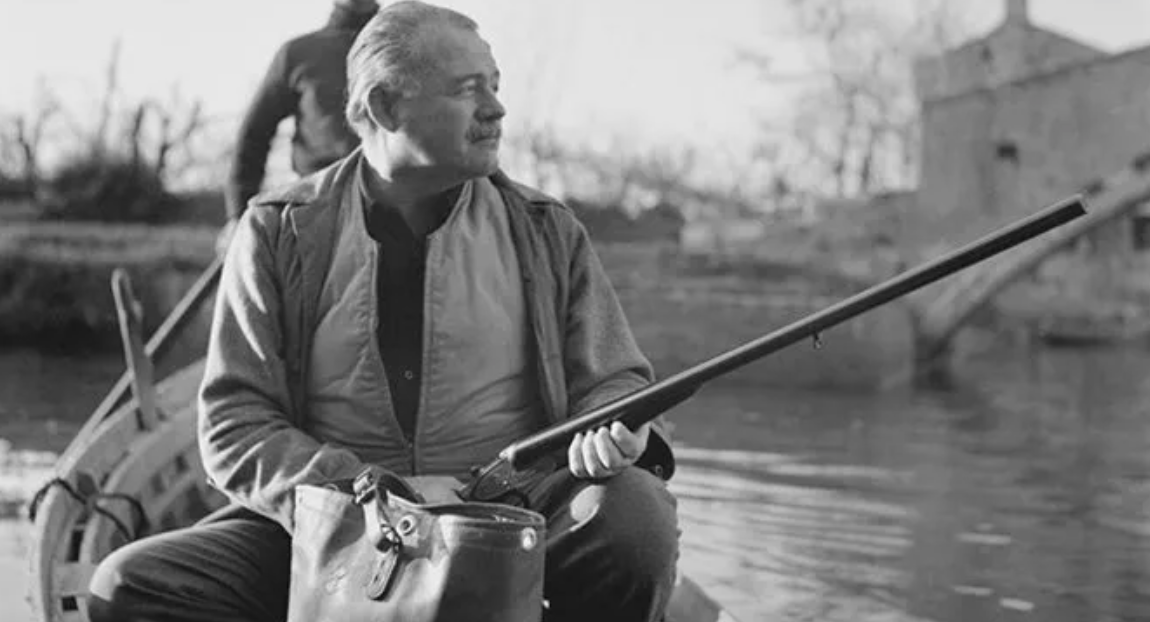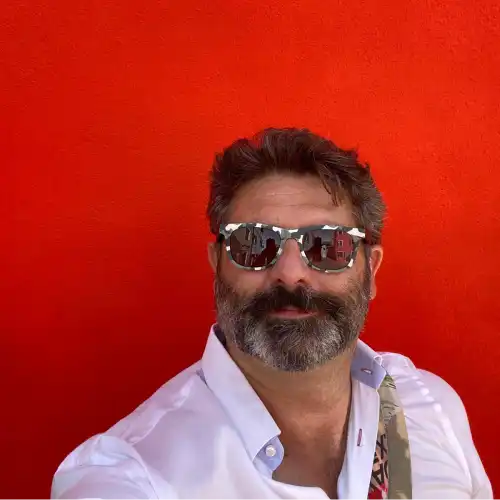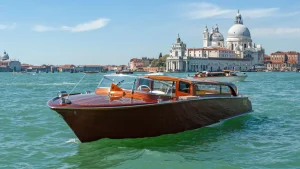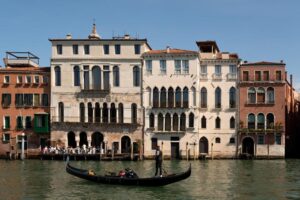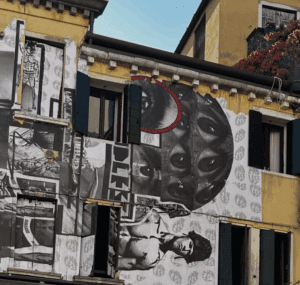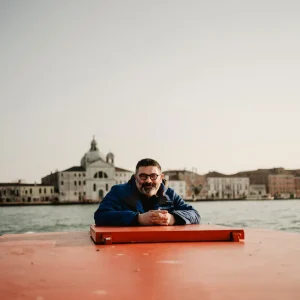Ernest Hemingway never really left Venice. His body returned to America long ago, but his spirit — restless, romantic, and relentlessly alive — still lingers in the lagoon, drifts along the Brenta Canal, hides among the reeds of the Caorle marshes, and echoes across the Dolomite peaks. Venice and its surrounding landscapes gave Hemingway not just inspiration but refuge, a place to heal, hunt, and write. Between Torcello, Bassano del Grappa, Caorle, and the Dolomites, the great American writer found what he’d been chasing his whole life: silence, adventure, and truth.
For those who love both literature and travel, retracing Hemingway’s Venetian footsteps is not merely a tour — it’s a pilgrimage. The journey leads through aristocratic villas and humble osterie, across frozen rivers and sunlit vineyards, from the whispers of gondoliers to the gunshots of duck hunts at dawn. It’s a story of love, war, and wilderness — all told in the most Hemingwayesque landscape Italy ever offered.
📍 Venice, 1948: A Return to Life
When Hemingway arrived in Venice in the autumn of 1948, he was 49 years old — famous, fragile, and tired. The war was over. Paris had faded. He came seeking calm, and perhaps redemption. Venice was his sanctuary. He checked into the Gritti Palace and later moved to the Locanda Cipriani on Torcello, then a quiet refuge known only to insiders. There, among the vineyards and ruins, Hemingway found himself again — through friendship, through nature, through words.
“Venice,” he wrote, “is the easiest city to fall in love with, and the hardest to leave.” And for him, it was both a muse and a mirror: serene on the surface, turbulent underneath.
At the Gritti, he befriended Giuseppe Cipriani (founder of Harry’s Bar), hunted with local nobles, and fell passionately in love with Adriana Ivancich, the young Venetian woman who would later inspire his novel Across the River and Into the Trees. Their connection — part mentorship, part obsession — was immortalized in fiction, but rooted in the real canals and countryside of the Veneto.
He wrote, drank, fished, and listened to the bells of San Marco drift across the fog. He described the lagoon’s colors — “gray, green, gold” — with the precision of a painter. And yet, even then, he was already looking beyond Venice, to the mainland, where wildness still reigned.
🦆 The Hunter’s Venice: Caorle, Torcello, and the Marshlands
Hemingway’s Venice was not the one of postcards and gondolas. It was a city of fishermen, hunters, and fog. His favorite escapes lay just beyond the tourist gaze — in the marshes of Caorle and the wetlands around Torcello, where he hunted ducks with Venetian friends and local guides.
In Across the River and Into the Trees (1950), the protagonist Colonel Cantwell — a thinly veiled version of Hemingway himself — spends his final days navigating these same landscapes, between duty and desire. The book, written during his Venetian winters, captures the tension between decay and vitality, the beauty of aging, and the violence of love.
The Caorle lagoons, where Hemingway shot duck and drank rough red wine with the locals, became his Eden. He called them “a paradise of silence.” Even today, the air carries the same scent of salt and mud, and if you visit at sunrise, you can still imagine him there: shotgun slung, eyes squinting against the mist, the outline of the Dolomites barely visible beyond the marsh.
His friendship with Venetian aristocrats like Baron Franchetti gave him access to exclusive casoni — wooden hunting lodges built on stilts in the lagoon. It was there, amid laughter and cigar smoke, that Hemingway found his truest Venetian companions: the men who lived by tide and season, who measured time by the flight of birds and the rhythm of the water.
🏝️ Torcello: Solitude, Adriana, and the Sound of Bells
“If you are lucky enough to have lived in Venice as a young man,” Hemingway might have said, “then wherever you go for the rest of your life, it stays with you.” On Torcello, he found his quietest happiness — and his most complicated love. The island, once one of Venice’s first settlements, had dwindled to a handful of inhabitants by the mid-20th century. Its ancient basilica, Byzantine mosaics, and deserted paths made it feel suspended in time.
At the Locanda Cipriani, run by his friend Giuseppe, Hemingway wrote, hunted, and entertained visitors who came not to see him, but to listen to him — stories of Africa, Spain, Cuba, and war. The island gave him the solitude he needed to write, and the intimacy he craved with Adriana Ivancich, whose youthful presence rekindled his belief in beauty.
To this day, Locanda Cipriani keeps his memory alive. The same garden where he wrote remains, the same stone terrace overlooking the bell tower of Santa Fosca. Order a Bellini, sit under the wisteria, and you’ll understand why he stayed so long. The air itself feels literary — soft, reflective, tinged with melancholy.
For travelers seeking a glimpse of Hemingway’s Venice, Tour Leader Venice’s Off-the-Beaten-Path Tour includes Torcello among its secret stops, offering the chance to walk the same trails he once wandered — far from crowds, close to the soul of the lagoon.
🏞️ Bassano del Grappa: Between Mountains and Memory
If Venice was Hemingway’s muse, then Bassano del Grappa was his mirror. Nestled at the foot of the Alps, this charming town was where Hemingway served as an ambulance driver during World War I — and where he was gravely wounded in 1918. His time there, spent amid soldiers, nurses, and the smoke of battle, inspired his novel A Farewell to Arms (1929).
He returned to Bassano years later, seeking the ghosts of his youth. The Ponte degli Alpini, rebuilt countless times, still stretches across the Brenta River — a bridge of both history and symbolism. Hemingway drank grappa at the Osteria Nardini, one of Italy’s oldest distilleries, and reminisced about the innocence he’d lost to war.
In many ways, Bassano is the other half of Hemingway’s Veneto: where Venice offered romance and reflection, Bassano offered memory and masculinity. The river, the mountains, the scent of pine — these were elements that spoke to his primal self, the hunter and soldier beneath the writer’s skin.
Today, visitors can follow his trail through the Veneto countryside with TLV’s Bassano: Art, History, and Wine Tour — tracing the writer’s path from battlefield to bar counter, from pain to poetry.
🌲 The Dolomites: Where the Sky Meets the Story
Above Bassano rise the Dolomites — sharp, magnificent, almost mythological. Hemingway’s connection to these mountains runs deep. After the war, he often returned to the alpine regions of Veneto and Friuli, where he hunted chamois, wrote letters, and absorbed the solitude he craved. The peaks reminded him of both Spain and Africa — places where the natural world was still unyielding, where a man could measure himself against silence.
In the Dolomites, Hemingway rediscovered the joy of physical endurance. He hunted with Italian friends, drank local wine, and wrote about courage, risk, and redemption. To stand in the high valleys today — Cortina, Asiago, or the Brenta Dolomites — is to feel that same elemental pull. It’s easy to imagine him there at dawn, rifle in hand, the first light touching the snow like a prayer.
Tour Leader Venice now offers a private Tour of the Dolomites, designed for travelers who want to experience these landscapes not just as tourists, but as storytellers. It’s a journey Hemingway himself might have taken — from Bassano to Cortina, through mountain passes and pine forests, following the rhythm of the land.
🕊️ Caorle: The Quiet Coastline of the Writer’s Soul
Long before Caorle became a beloved seaside destination, it was Hemingway’s secret. The marshlands between Caorle and Bibione, still wild and remote, were his favorite hunting grounds. Here, surrounded by reeds, he spent entire days in silence, writing notes in his leather journal and cleaning his guns by candlelight. The casoni — rustic fisherman huts — were his refuge, as they still are for locals today.
He described the place in letters as “a dream of water and wind.” The locals still tell stories of “il grande americano” who came every winter with his notebook and his whiskey, vanishing into the mist with his guides. Those same casoni can still be visited, their wooden beams blackened by decades of smoke, their charm untouched by time.
For modern travelers seeking the same tranquility, TLV’s lagoon and countryside itineraries — such as the Slow Lagoon Experiences — capture that same mood: moving through silence, beauty, and reflection, the way Hemingway did.
✍️ Writing the Veneto: Across the River and Into the Soul
Hemingway’s Venetian years were among his most introspective. While critics were divided on Across the River and Into the Trees, the novel remains one of his most personal — an ode to aging, to lost love, and to the strange peace that comes from returning to familiar waters. Through Colonel Cantwell’s eyes, Venice becomes more than a setting; it becomes a confession.
He described Torcello’s bells, the scent of wet stone, the reflections of palazzi in the lagoon — details so vivid that readers could feel the dampness of the air. For Hemingway, writing about Venice wasn’t just literature; it was therapy. He was confronting mortality in the only language he knew: beauty and brevity.
That duality — of life and loss, romance and ruin — defines his Italian legacy. It’s why travelers still come searching for “Hemingway’s Venice”: not just the places he visited, but the emotions he left behind.
🛶 Following Hemingway’s Footsteps: A Modern Pilgrimage
To follow Hemingway’s path today is to see Venice and Veneto with new eyes. It’s a journey across landscapes of love and war, through villas and valleys, where every stop whispers a line from his life.
Start in Venice, with a Bellini at Harry’s Bar and a walk through St. Mark’s Square at dawn. Then venture to Torcello, where you can lunch at Locanda Cipriani, surrounded by the same silence that once inspired him. Move on to Bassano del Grappa, crossing the Ponte degli Alpini and tasting the fiery spirit that bears the town’s name. Continue to Caorle, to wander the marshes where Hemingway hunted and dreamed. And finally, rise into the Dolomites, to stand among the peaks that made him feel both small and infinite.
Each location reveals a different Hemingway — the soldier, the lover, the sportsman, the philosopher. And through them all runs a single thread: his reverence for authenticity. He admired things that were well made — a rifle, a sentence, a friendship, a glass of wine. That reverence still defines this region and its people.
✨ Explore Hemingway’s Veneto with Tour Leader Venice
- Venice Off-the-Beaten-Path Tour
- Bassano del Grappa: Art, History & Wine
- Tour of the Dolomites
- Slow Lagoon Experience
- Cicchetti & Wine Experience
Ready to walk in Hemingway’s footsteps? Let Tour Leader Venice guide you through the places he loved most — from the still waters of Torcello to the wild silence of the Dolomites. Experience the Veneto as he did: with curiosity, courage, and a glass of wine in hand.
Follow the Story
Explore more literary journeys and authentic Venetian experiences on the Tour Leader Venice Blog — where history, art, and storytelling come together to celebrate the timeless beauty of La Serenissima and beyond.
Because Hemingway didn’t just visit Venice. He became part of it — and Venice, forever, part of him.
Where did Ernest Hemingway stay in Venice?
Hemingway stayed first at the Gritti Palace, then at Locanda Cipriani on Torcello Island — his true Venetian sanctuary. There he wrote, hunted, and entertained friends under the wisteria. Travelers can still visit the Locanda today and even join our Explore Venice Off the Beaten Path Tour to walk the same peaceful trails he loved.
What Italian towns inspired Hemingway’s novels?
Hemingway’s time in Bassano del Grappa during World War I inspired A Farewell to Arms, while his Venetian years — especially on Torcello and in the marshes near Caorle — shaped Across the River and Into the Trees. You can retrace his path with our Bassano: Art, History & Wine Tour and Slow Lagoon Experience.
How can I follow Hemingway’s footsteps in the Veneto today?
Start in Venice with a Bellini at Harry’s Bar, visit Torcello for lunch at Locanda Cipriani, then travel to Bassano and the Dolomites for mountain views that inspired his letters. Our Tour of the Dolomites and Cicchetti & Wine Experience combine the landscapes, stories, and flavors Hemingway cherished most.
